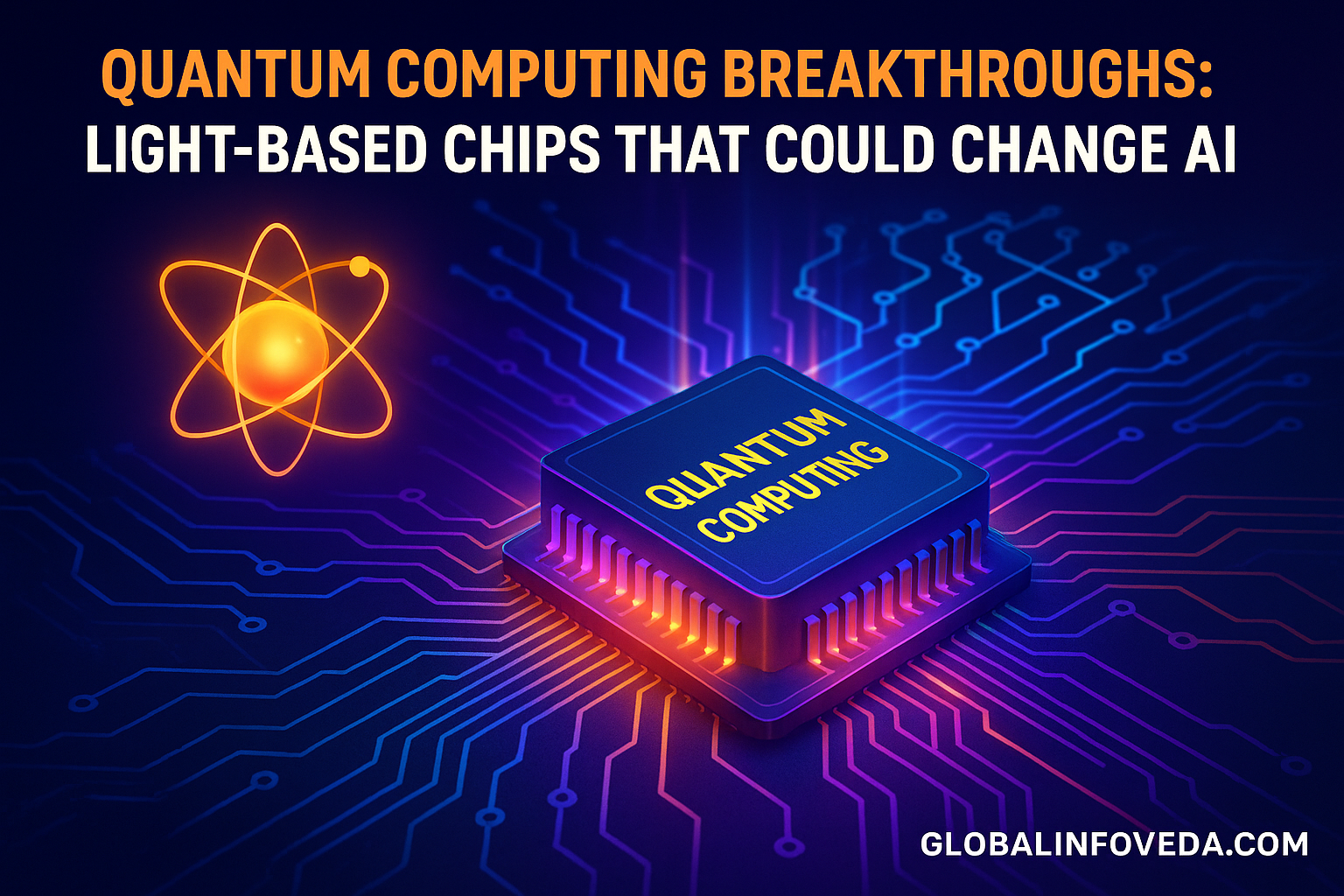Quantum Computing Breakthroughs: Light-Based Chips That Could Change AI
💡 Introduction: The Dawn of Photonic Quantum Chips
Quantum computing has been touted as the technological revolution of the century, but its path to real-world applications has been hindered by high error rates, the need for ultra-low temperature cooling, and difficulties in scaling up to millions of qubits. A paradigm shift is emerging through light-based (photonic) quantum chips—devices that harness photons instead of electrons to perform quantum computations.
By leveraging the speed and stability of light, these chips promise to accelerate AI processing, slash energy requirements, and allow for massive scalability. This advancement could lead to AI systems capable of solving problems in minutes that would take traditional supercomputers years. For a broader perspective on the quantum revolution, see How Quantum Computing Will Change Everything by 2030.
📊 Big Picture: Why Light-Based Quantum Chips Matter
- ⚡ Processing at Light Speed: Photons travel without resistance, enabling near-instant quantum operations.
- ❄️ Room-Temperature Operation: No need for expensive cryogenic infrastructure.
- 📏 Scalable Manufacturing: Compatible with existing silicon photonics fabs, enabling mass production.
- 🤖 AI Acceleration: Training trillion-parameter models could drop from months to days.
- 🌍 Environmental Advantage: Reduced carbon emissions compared to energy-hungry AI data centers.
- 💹 Economic Catalyst: Opens new global markets for quantum hardware and AI services.
For parallels in sustainable tech, explore Solid-State Batteries: The Breakthrough Tech Powering EVs in 2025.
🔍 How Photonic Quantum Chips Work
1. Photon-Based Qubits
- Encodes quantum states in properties like polarization or phase of single photons.
- Offers greater immunity to thermal noise and certain forms of decoherence.
2. Integrated Optical Circuits
- Uses waveguides, beam splitters, modulators, and phase shifters to route and process photons.
- Manufactured on silicon substrates for cost-effective scaling.
3. Entanglement & Quantum Logic Gates
- Nonlinear optical materials generate entangled photons on-chip.
- Quantum gates are implemented through interference patterns, enabling highly parallel operations.
4. Hybrid Systems
- Integration with classical processors for hybrid quantum-classical AI algorithms.
- Potential to connect with quantum communication networks for distributed computing.
For other game-changing hardware trends, see AI vs Human Intelligence: Can Machines Ever Replace Us?.
📈 Economic Impact Analysis
- AI Training Cost Reduction: Potentially reduces cloud AI training costs by 70–90%.
- Data Center Efficiency: Drastically lowers power and cooling requirements.
- Startup Ecosystem: Encourages the growth of quantum-photonics-focused AI companies.
- Academic Access: Universities gain affordable access to high-performance quantum resources.
- Global Market Growth: Photonic quantum chip market projected to reach tens of billions by 2035.
For related economic shifts, see GST Reform 2025: What the Tax Changes Mean for Your Wallet.
📜 Historical Context
- 1980s–1990s: Theoretical frameworks for quantum computing established.
- 2010s: Superconducting qubits dominate early experimental systems.
- 2020s: Advances in integrated photonics lead to practical prototypes of photonic quantum chips.
- Mid-2020s: First demonstrations of photonic quantum AI acceleration.
📊 Comparison Chart: Photonic vs Traditional Quantum Chips
| Feature | Photonic Quantum Chips | Superconducting Qubits |
|---|---|---|
| Speed | Near light-speed | High but electron-limited |
| Cooling Requirements | Minimal | Requires cryogenic systems |
| Scalability | High with silicon photonics | Limited and costly |
| Noise Susceptibility | Lower for certain error types | Higher, heavy error correction |
| Energy Use | Extremely low | High |
| Integration | Easy with existing fiber optics | More challenging |
🏛️ Policy & Relief Measures
- Government R&D Programs: Billions in funding for quantum photonics research.
- International Standards: Efforts to create global interoperability for quantum networks.
- Tax Incentives: Reduced taxation for early adopters of photonic quantum hardware.
- Education & Workforce Training: Quantum engineering and photonics courses at universities.
- Public-Private Partnerships: Collaboration between governments, academia, and industry.
🌍 Cultural & Economic Implications
- AI Governance: Enables large-scale simulations for ethical AI oversight.
- Scientific Breakthroughs: Speeds up research in drug discovery, climate modeling, and materials science.
- Tech Competitiveness: Nations race to establish quantum dominance.
- Equity in Access: Democratizes high-end AI capabilities for smaller nations and institutions.
- Workforce Evolution: New careers in quantum photonics engineering and quantum algorithm design.
For more on emerging global technology trends, read Global Affairs 2025: The Five Trends Reshaping Our World.
🔮 Final Insight: Light-Speed AI is Coming
Photonic quantum chips have the potential to unlock the true power of quantum computing for AI, ushering in an era where computational limits are redefined. Those who invest now—in research, infrastructure, and skills—will be the leaders of the AI-driven quantum future.
📡 Read more at GlobalInfoVeda.com
